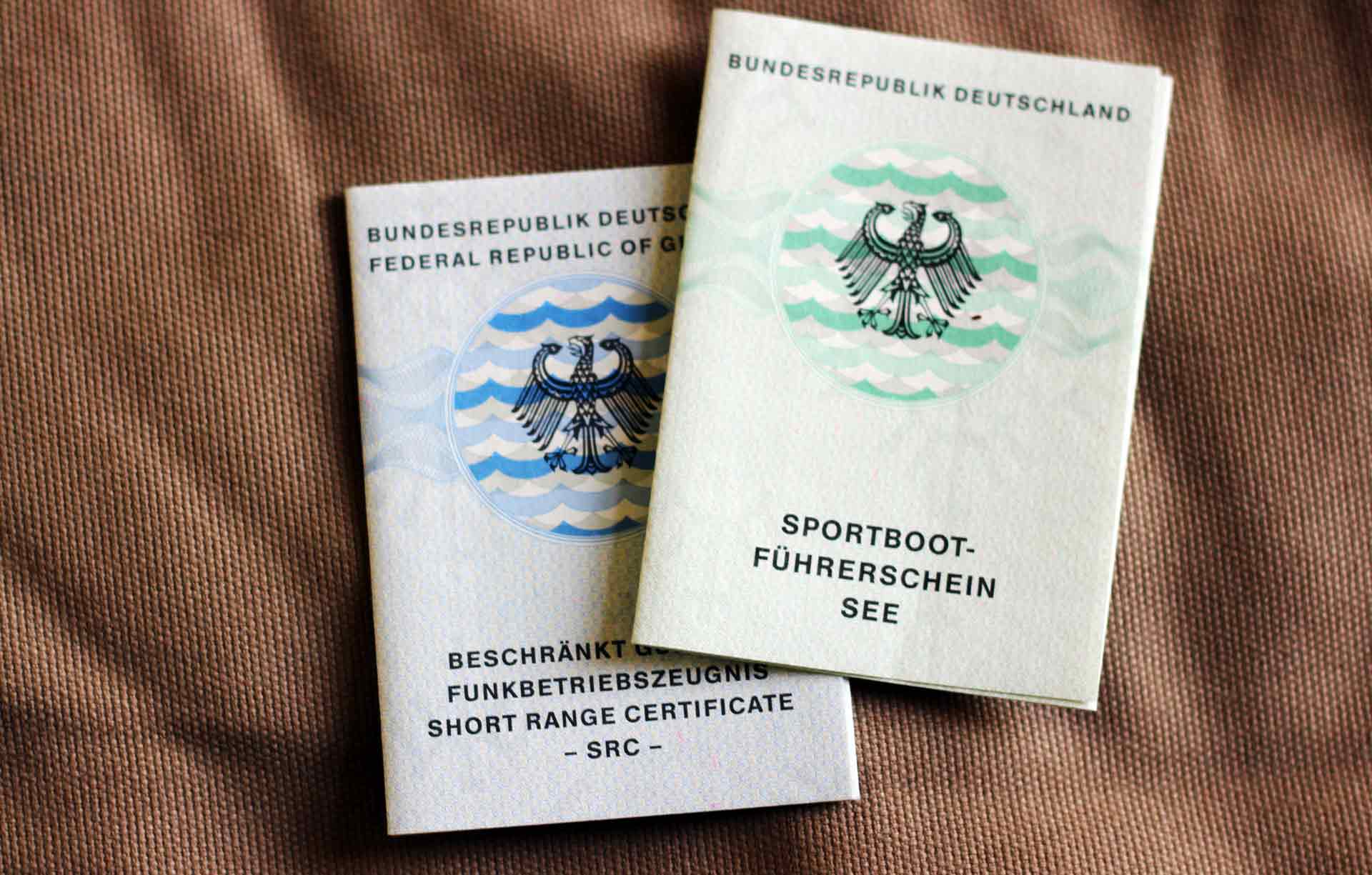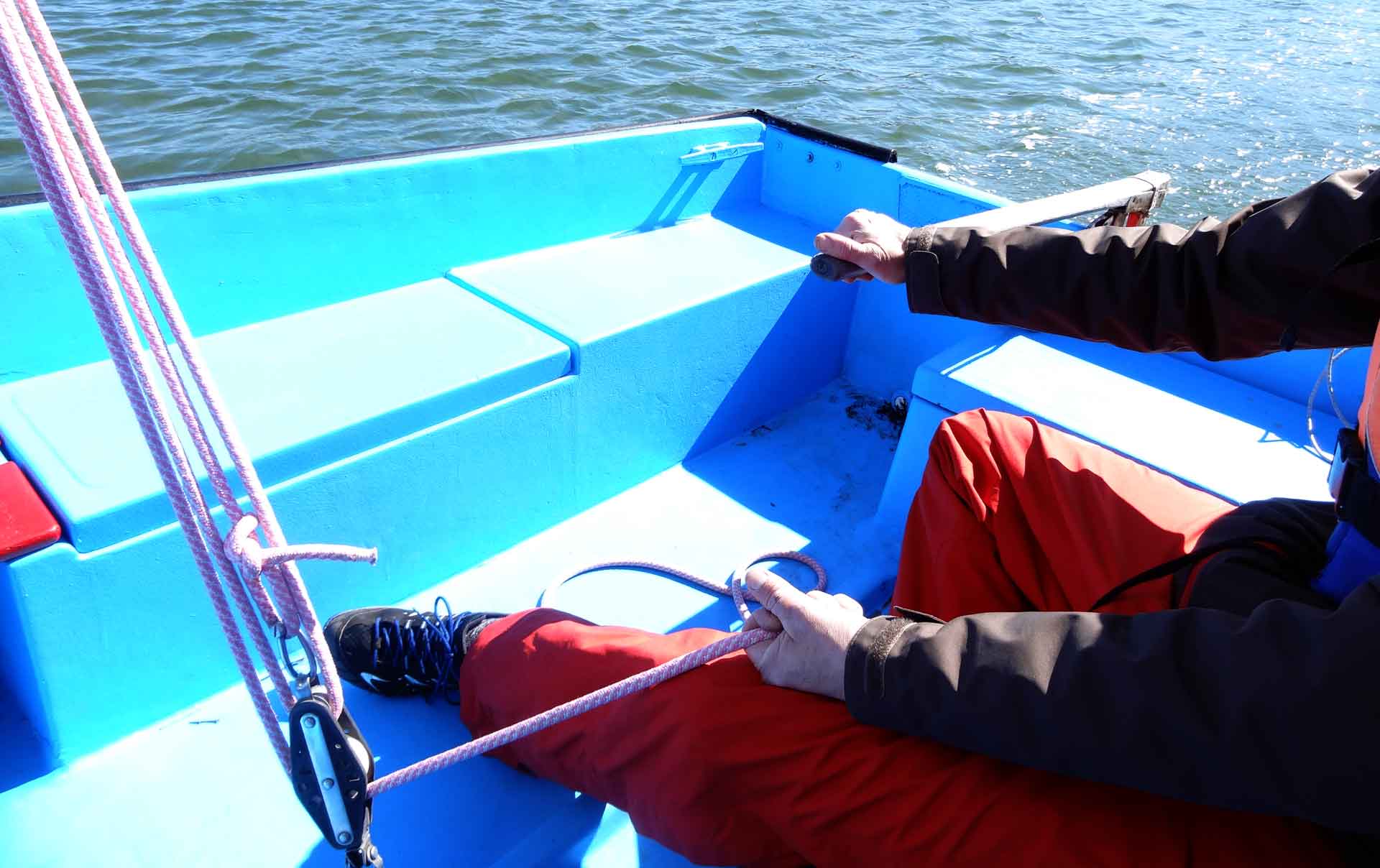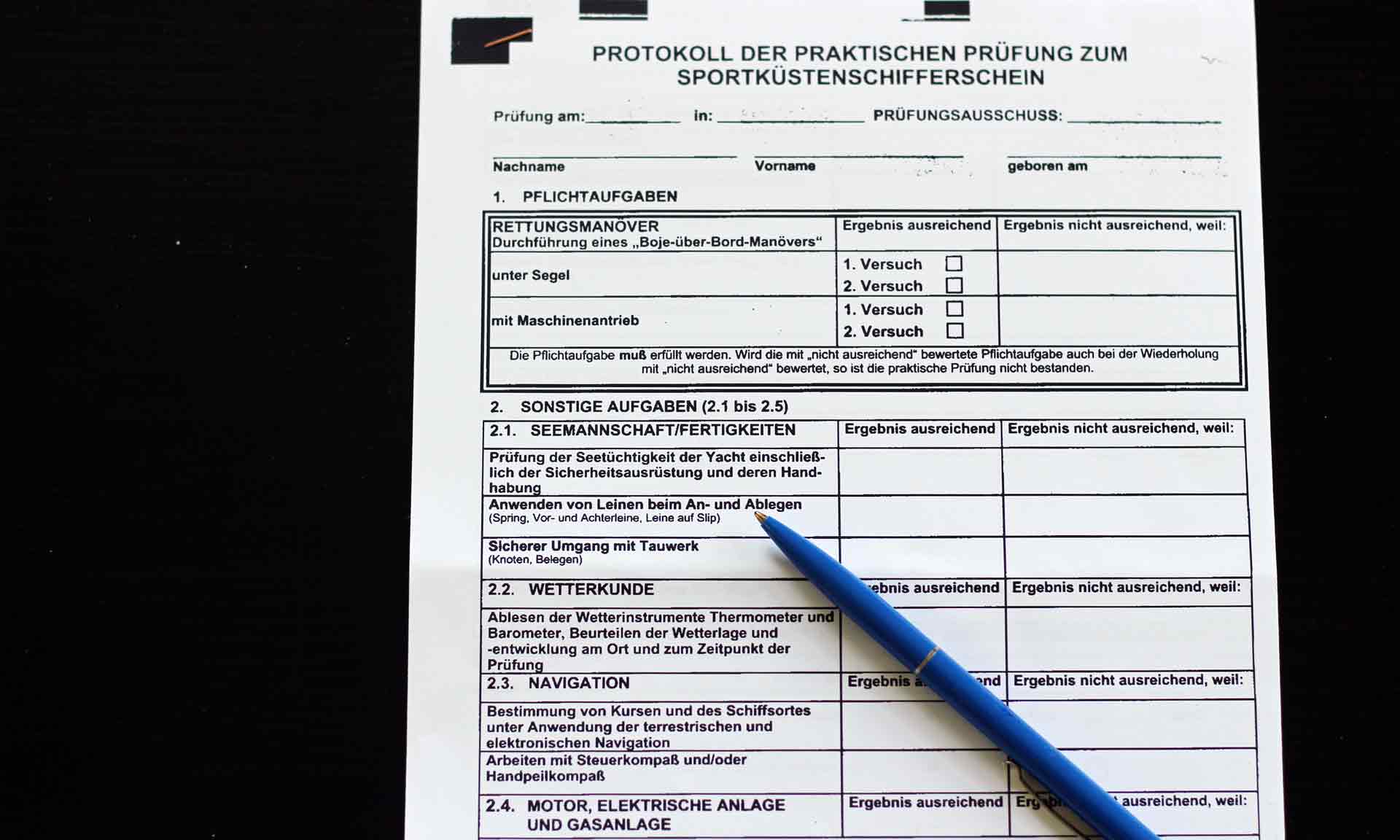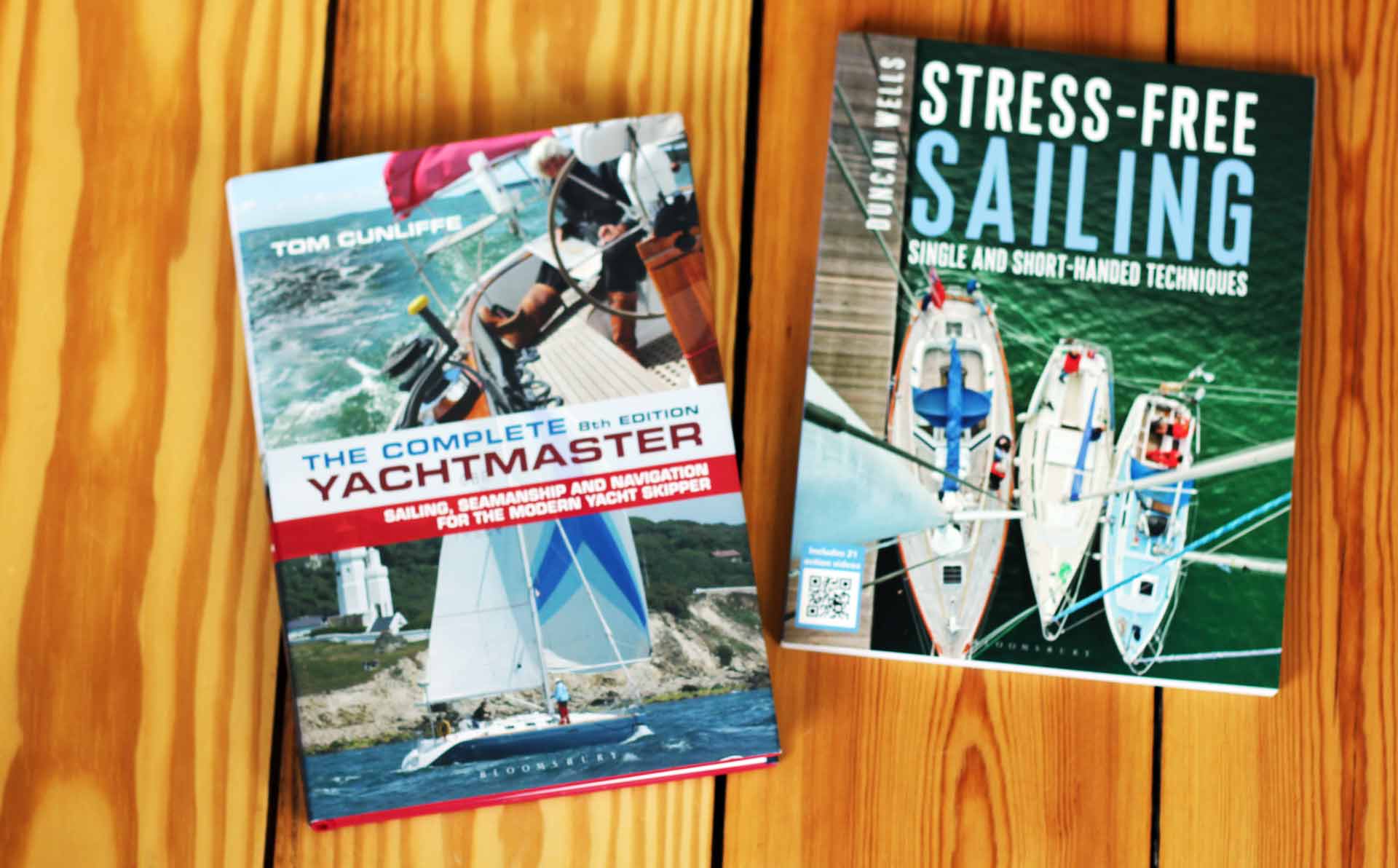I´m off again – and that´s a great feeling. Aboard a yacht with some 3 other highly motivated pals and a cool skipper I am going to prowl the waves of the Baltic Sea around Neustädter Bucht up to the Danish South Sea to take the next step in my own yachtmaster education. This time, it´s the Coastal Yachtmaster or Sportküstenschifferschein (SKS) as we say in German. I already have successfully completed the exams for acquiring the official license to helm a ship, the so-called Sportbootführerschein See (SBF See) and the Short Range Certificate (SRC) for being allowed to handle DSC and VHF marine radio communication.

But that´s just the beginning. In Germany the SBF See-certificate is just a legally binding document for verifying of having acquired basic capabilities in terms of marine traffic rules, safety at sea and some basic maneuvers with a small motor boat. Anyone who has this certification is allowed to sail. But he cannot sail at all. Also, the SRC makes me being able to handle marine radio communication via DSC or VHF-voice radio but again, I´m no sailor at all in having acquired it.
Learning to Sail: The Basic Sailing Class
I was asking myself whether I should proceed to a full sized yacht to learn handling it and how to sail – because I own a yacht and why should I begin with a small yawl? But Richard Jeske, owner and sailing instructor of my sailing school put it this way: “Of course you should start on a smaller boat!” (Here´s the complete interview with Richard on what makes a good skipper). Done: Some 4 weeks ago I completed a 2-weekend practical and 3-day theoretical basic sailing class. Sailing was done on French made Menhir-class yawl. I did learn all basic sailing-related capabilities and maneuvers such as sailing on different points of sail, casting off and landing without engine and Man Over Board-maneuver (MOB) by doing the famous “Figure 8”.

Along with it, a proper command language with the use of the right technical terms was a major emphasize of the course. I didn´t make the exam because I felt no need to do so (and spare the money) but what I did learn was a true feeling for the find and behavior of the ship because all sheets are sailed by hand. It´s a direct and instantaneous sailing – much more intense than the somewhat dampened feel of a full sized yacht. The need for constant sail trim, and good seamanship in terms of what it means to be responsible for a crew and in charge for a boat was of utmost importance. And it worked indeed: I could prove it by sailing a 6.35 meter Yngling yawl single handed with my family on board safely and neat. It was a good training to acquire both competence and composure to act as skipper.
The Yachtmaster Coastal Course
I am now doing the practical part of the so-calles SKS certification, similar to RYA´s coastal certificate. In being allowed to participate a sailor in being has to prove for at least 300 miles of sailing with a certified skipper and thus acquiring certain abilities. 110 of them I did sail on the fast Pogo 40 racer (which can be read here and here) and 200 miles will be collected in the course of the cruise itself. What I really like is the fact that I will be sailing a 44 feet X-Yacht (I am a fan of X-yachts, which can be read here) for 6 consecutive days. The best of all: We are just 4 people doing the course, which will allow us to have much time at the different stations practicing the maneuvers.

Here´s my hint if you plan to do such a class by yourself: Ask for the size of the classes and opt (next to other criteria) to have a booking placed with the smaller sized classes. You will learn much more! A bit extraordinary is my personal approach to the SKS/RYA Coastal-class: I am doing the practical exam before the theory. Why? As Richard emphasizes, having done the practical part and succeed gives you the aplomb to go through the theoretical stuff with ease. Additionally I can ask my fellow crewmates intimate questions on their theoretical examination which I assume they have already passed. Besides: Who wants to sit in classrooms and bend over dry books in summertime temperatures like these? I will be comfortably doing theory in the coming winter months.
Yachtmaster Coastal Examination: What will be tried?
As we are in Germany, the land of rules and laws, there´s also a certain manor of what will be shown to the examiner. Which is a bit odd but nice to have: We can practice exactly what is going to be tried later. All in all it´s 7 maneuvers which the examiner may request me to perform. First of all and mandatory for every sailor in being: The Figure-8 MOB maneuver. I am so much looking forward to it because I really love performing this maneuver. It´s not only a somehow complex maneuver involving sailtrim, exact steering, team work and precision – it´s just fun to perform because there´s so much action connected to it. Bearing off to broad reach, gaining distance, back on beam reach and performing a tack, quickly bearing off to beam reach again and exactly shooting up to come to a halt just next to the person in the water. With the Menhir I was able to rescue the buoy in less than 2 minutes. It will be fun to do this with a 12 meter yacht.

Apart from this mandatory task for everyone a range of different things can be tried too, such as: Casting off and landing both under canvas or under engine power, correct handling of ropes, safety check of the yacht, meteorology in terms of being able to read gauges and interpretation of data. For navigational matters it´s plotting of courses and bearings, handling of machinery such as engine, electrical circuits and liquefied gas-installations of the yacht. And of course handling of the crew as skipper-in-charge. And this is when a proper command language comes into play again: Helming under engine power, performing different courses under full canvas in different points of sail, hoisting, reefing and taking down of sails, heaving-to as well as tacking and gybing. Quite a chunk, isn´t it?
Why I look forward to the Yachtmaster Exam
Most people I know simply hate exams. It´s stressful. Heart is beating faster, some feel real fear. Not so with me, I am lucky. Yeah, right, I am excited. But also: I have so much fun in doing exams, I´m so much looking forward to it. What can there be better than to show to a pro what I have learned? How much I love doing what I do?

So, I´m looking forward to the coming 6 days aboard the X-Yacht, looking forward to my fellow crew members and – best of all – nicest sailing weather with much sunshine and fair winds. What will be when I smash up a maneuver? No prob: It´s also a German law to offer a second chance. But honestly: It should be a small problem for a motivated, well educated and yacht-loving seafarer-in-being to pass this exam.
Wish me luck, mates. Hoist the sails-ho! I will be back in 6 days.
How did you experience exam-situations when you did your RYA yachtmaster certifications? I am excited to receiving your comments, stories and hints.
